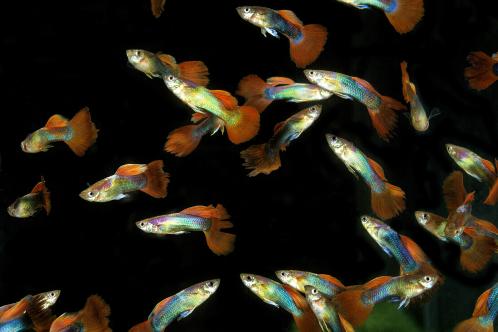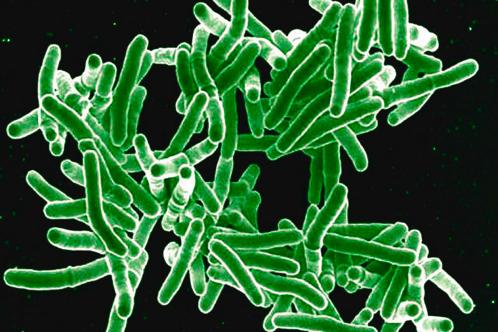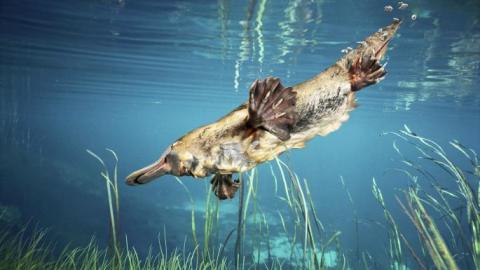Improbable Destinies: How Predictable is Evolution?
Jonathan Losos
Riverhead Books (August 8, 2017)
Sold by: Penguin Group (USA) LLC
382 pages
Let’s say that, 66m years ago, the monstrous asteroid that gouged out the hole we now call the Gulf of Mexico, thus ending the long reign of the dinosaurs, had, instead, narrowly missed our planet. The dinosaurs would have grazed on regardless and the tiny mammals racing between their giant feet would not have taken over the planet and evolved into us.
Would some other self-aware, highly intelligent being have still appeared? Many people think so. One paleontologist has suggested it would have been a dinosauroid with two legs, two arms, a big brain and, apart from some offputting lizard-like features, a very human aspect. Others have imagined it would look more like a bird with a long tail and a huge beak, but clever.
What if the asteroid that ended the dinosaurs had missed the planet?
The belief that we (or something much like us)were inevitable, given the conditions on Earth, is known as determinism. Its fiercest opponent was Stephen Jay Gould, whose 1989 book Wonderful Life argued that, if you could rerun the whole evolutionary history of life on Earth, random mutations and environmental accidents would ensure a different outcome every time. Gould was so brilliant and such a gifted writer that the case appeared to have been closed.
Far from it: in fact, the case has recently been bust wide open. That is the subject of this book. Jonathan Losos is professor of evolutionary biology at Harvard, but here he is definitely targeting the popular market. This makes for a pacey read through some complex material, though occasionally one does hear the flapping of chinos and polo shirts, the uniform of the genially patronising American academic. Never mind, on the whole it works.
The leading opponent of Gould’s view is the British paleontologist Simon Conway Morris, who argues for “convergent evolution” — the idea that different species will independently arrive at similar adaptations and that, therefore, evolution could, potentially, be predicted. So, if the asteroid missed, the smart lizard guy would appear as an inevitable adaptation to life on Earth.
But, it seemed, there was no way anybody could ever win this argument. Following Darwin, most people assumed that evolution was always slow, taking thousands, millions or billions of years to produce, say, the eye. This meant the science could not be proved by experimentation and prediction. Now, however, it has become clear that evolution can be blindingly fast and is, therefore, observable in the field and the lab.
For example, a brightly coloured population of guppies, those stars of the domestic fish tank, will swiftly evolve into dull-coloured nonentities when exposed to predators. The 150-year-old Park Grass experiment at Rothamsted has shown that plants evolve rapidly to adapt to changes in their environment. And those inadequates who get their jollies shooting big game are causing reduced antler size in deer and smaller or no tusks in elephants. Fish are also getting smaller because that’s the way to slip through trawler nets.

Fish-tank favourites: brightly coloured guppies swiftly turn dull when exposed to predators ALAMY
This is real evolution, changes at the level of the DNA, not some temporary behavioural response. And it matters to us. One of the most terrible threats to our way of life is the rise of antibiotic-resistant bugs. This is further evidence of rapid evolution. Staphylococcus (sometimes harmless, sometimes lethal) evolved resistance to Penicillin within a decade or so. Tetracycline, a treatment for infections from cholera to syphilis, generated resistant bugs within nine years. Resistance to Methicillin appeared within two years. We are, currently, running out of options.
The new study of rapid evolution may help. The tuberculosis bacterium, for example, is an extremely creative evolver of antibiotic resistance. But now we are working out the genetic roots of resistance and we have machines that can rapidly “read” the DNA code. We are beginning to identify the precise mutations that produce resistance. One day, maybe soon, we will be able to knock out these mutated genes and destroy the bug’s defences.
The bulk of the book consists of eager descriptions of the experiments that prove the existence of rapid evolution. Losos started out as a lizard specialist, so there are many reptile pursuits on Caribbean islands. There is also the astounding story, that will make patriotic hearts beat faster, of the plant experiment begun in 1843 by John Bennet Lawes on the family estate of Rothamsted in Hertfordshire. It continues to this day, a monument to the best of British science that has been revitalised by the discovery that what Lawes had seen was evolution in action.
The big question is: now that we can observe and experiment with evolution, can we find the answer to the Gould/Conway Morris conundrum about chance versus determinism in evolution? Losos keeps us in suspense, picking out examples of convergence and then casting doubt on them with clear evidence of pure chance. The best case is the LTEE (long-term evolution experiment), which started in 1988 in Michigan. This involves tracking the evolution of successive generations of the E.coli bacterium. In November last year, they had run through 66,000 generations.
It would take pages to explain this beautiful experiment but, basically, everything jogged along nicely, producing clear evidence of convergence, until generation 33,127 when the marvellously named scientist Zachary Blount strode into the lab and found one flask of E.Coli had turned cloudy. Essentially, this was because that one flaskful had evolved to eat something different and had reproduced massively as a result.

Fast adapter: the tuberculosis bacterium is quick to develop resistance to antibiotics ALAMY
So everything converges until, one day, it doesn’t. This suggests Gould and Conway Morris might each be half right: much can be predicted but a few big, decisive things can’t. They just happen; they are what Nassim Nicholas Taleb would call black swans. All our deterministic narratives fall prey to these birds.
So, to return to lizard man, would something like us have appeared if that asteroid had missed? Losos sort of concludes no. About 100,000 years ago there were many hominids around, but only one human species now survives. When it comes to world-conquering guile, we have no competitors. We are a singularity, a being as strange and as unpredictable as the duck-billed platypus, for which Losos has a special affection. It is a creature born of chance that is so comical, so ridiculous and so unrelated to anything else that it defies all reason. Sound familiar? Check the mirror.
Clever duck
The platypus may seem ripe for mockery, but it is a remarkably sophisticated animal in many ways. That bill, for instance, is covered with tens of thousands of minute sensors — many of them sensitive to touch and able to detect changes in water pressure produced by the swish of a fish’s tail, the rest electroreceptors that can precisely locate food via the minute electrical charges their prey produce as they move.
_______________________________________________
Jonathan B. Losos is the Monique and Philip Lehner Professor for the Study of Latin America and Professor of Organismic and Evolutionary Biology at Harvard University. He is the recipient of a number of awards, including the Theodosius Dobzhansky Prize from the Society for the Study of Evolution and the David Starr Jordan Prize from the American Society of Naturalists.
Bryan Appleyard is a British journalist and author. He worked for The Times and as a freelance journalist and has written for the New York Times, Vanity Fair, Daily Telegraph, Spectator and the New Statesman.


Spread the word